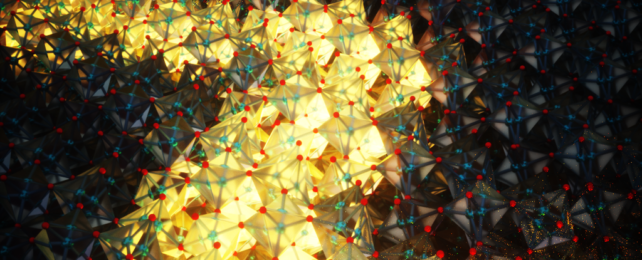It isn't alive, and has no structures even approaching the complexity of the brain, but a compound called vanadium dioxide is capable of 'remembering' previous external stimuli, researchers have found.
This is the first time this ability has been identified in a material; but it may not be the last. The discovery has some pretty intriguing implications for the development of electronic devices, in particular data processing and storage.
"Here we report electronically accessible long-lived structural states in vanadium dioxide that can provide a scheme for data storage and processing," write a team of researchers led by electrical engineer Mohammad Samizadeh Nikoo of École Polytechnique Fédérale de Lausanne in Switzerland in their paper.
"These glass-like functional devices could outperform conventional metal-oxide-semiconductor electronics in terms of speed, energy consumption and miniaturization, as well as provide a route to neuromorphic computation and multilevel memories."
Vanadium dioxide (VO2) is a material that has recently been floated as an alternative, or complement, to silicon as a basis for electronic devices, due to its potential to outperform the latter material as a semiconductor.
One of the most intriguing properties of VO2 is that, below 68 degrees Celsius (154.4 degrees Fahrenheit), it behaves as an insulator – but above that critical temperature, it abruptly switches to a metal, with good conductivity, a change known as the metal-insulator transition.
It was only recently, in 2018, that scientists discovered why: as temperature rises, the way the atoms arrange themselves in their lattice pattern changes.
When the temperature drops back down, the material reverts to its original insulator state. Samizadeh Nikoo originally set out to investigate how long VO2 takes to transition from insulator to metal, and vice versa, taking measurements as he triggered the switch.
It was these measurements that revealed something very peculiar. Although it returned to the same starting state, the VO2 behaved as if it remembered recent activity.
The experiments involved introducing an electrical current to the material, which took a precise path from one side to the other. This current heated the VO2, causing it to change its state – the aforementioned rearrangement of the atomic structure. When the current was removed, the atomic structure relaxed back again.
When the current was reapplied, things got interesting.
"The VO2 seemed to 'remember' the first phase transition and anticipate the next," explains electrical engineer Elison Matioli of EPFL. "We didn't expect to see this kind of memory effect, and it has nothing to do with electronic states but rather with the physical structure of the material. It's a novel discovery: no other material behaves in this way."
The work of the team revealed that VO2 stored some kind of information on the most recently applied current for at least three hours. It could, in fact, be significantly longer – "but we don't currently have the instruments needed to measure that," Matioli says.
The switch is reminiscient of the behavior of neurons in a brain, which serve both as a unit of memory and processor. Described as neuromorphic technology, computing based on a similar system could have a real advantage over classical chips and circuit boards.
Because this dual property is innate to the material, VO2 seems to tick all the wishlist boxes for memory devices: potential for high capacity, high speed, and scalability. In addition, its properties give it an edge on memory devices that encode data in a binary format controlled by electrical states.
"We have reported glass-like dynamics in VO2 that can be excited in sub-nanosecond timescales and monitored for several orders of magnitudes in time, from microseconds to hours," the researchers write.
"Our functional devices can, thus, potentially meet the continuous demands of electronics in terms of downscaling, fast operation and decreasing the voltage-supply level."
The research has been published in Nature Electronics.
